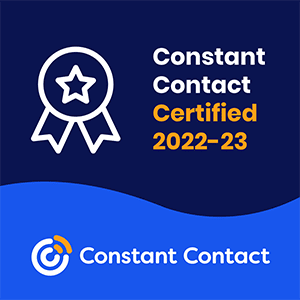Although some believe content marketing is a simple undertaking, many marketers are still battling to grasp the concept altogether. According to Hubspot, approximately 77 percent of modern companies are using some type of content marketing strategy. But while some businesses think that having a successful content strategy is as simple as putting out a large volume of content, others know it’s not that easy.
In this post, we’ll go over some common barriers that content marketers face and how to overcome them so that your team can produce top-quality content.
Too many cooks in the kitchen
Surprisingly, one of the most significant roadblocks to quality content is having too many individuals participating in the content creation process. The involvement of various content authors, editors, stakeholders, and others can result in a protracted project timetable and a slow approval process, making it even more challenging to execute effective content marketing, capitalize on trends and turn content around quickly.
To solve this, determine who needs to be involved in the content generation process and who has the time and ability to approve pieces promptly for each project. Project management software can help this area by allowing you to see where a project or task is in the process and reassign work as needed.
While too many cooks in the kitchen is a bad thing, too few is a problem if you don’t have adequate resources or time to develop the content marketing items you’ve planned for your content calendar. Even if your content marketing team is small, you’ll need at least three crucial members: a writer, an editor, and a designer. One of these jobs may initially have to do double duty as a distributor, but all three are essential for producing quality content.
Related: How to Promote Your Content via Social Media
Know your target well
We sometimes find ourselves developing material for our consumers without knowing whether or not the information is appropriate. It doesn’t matter whether you have the most optimized blog or the most well-researched content if you aren’t addressing the correct individuals. Content marketers should aim to increase conversions rather than increasing traffic.
Collaborate with your customer service or sales teams to truly understand your audience and what information or queries they are constantly bringing up. Customer surveys are an excellent method to determine what types of material they’d like to see. You can also work with your social media manager to figure out what topics or content formats resonate with your audience on those channels and then reproduce your efforts on your website.
Create content that is in sync with the buyer’s journey
If you’re not sure what kind of content to put on your website, it’s a good idea to map out the buyer journey; that way, you’ll know exactly which questions and topics need to be answered at each stage; from awareness through positioning and purchase.
In B2B sales, buyers are more likely to take more complicated paths before clicking “purchase now” than in B2C sales. Instead of relying on a single aspect, they consider a variety of factors while making purchases. For example, some purchasers may learn about your product through social media rather than traditional search engines, which means your website’s material needs to be strong. Once you have a sales funnel set up, attempt to figure out how each stage works and what kind of information and materials you’ll need for each one to create an effective content marketing campaign.
Related: Content Marketing is the New Advertising!!
Manage unrealistic expectations and impatience
If you’ve ever tried to make a business case for effective content marketing to your boss, you’re aware of how complex this task can be. Although content marketing has been popular for several years, there are many misconceptions about how it works and what can be expected from a content marketing investment.
Impatience is a significant obstacle. If you say the term “years” in a pitch meeting with management, you’ll almost certainly be met with chilly looks and awkward silences. However, even with a large and experienced content marketing staff on your side, it can take several years for content to start performing as it should.
This isn’t a problem with content marketing per se but rather with expectations. Many executives and managers are accustomed to seeing a quick return on traditional marketing tactics. It’s a tough pill for them to swallow to be asked to fund content marketing projects and wait several years for them to pay off. You need to educate them about the fact that content marketing often takes time. Few blogs become overnight sensations, and it takes effort to create an audience and establish trust.
It’s critical to keep your expectations in check. Instead of setting yourself up for failure by aiming too high too soon, set realistic traffic and engagement goals. It’s better to set achievable goals and meet them than to write off your content marketing efforts as a failure due to missed benchmarks that were unrealistic in the first place.
Make sure your focus is in scope
Many content marketers make the mistake of either focusing too much on a broad subject area or focusing entirely on a niche of insufficient size. Even established, well-resourced content creation teams find it challenging to strike a balance in terms of editorial focus. If you cast your content net too broadly, you may find it challenging to make a name for yourself, or you may lose visitors to larger, more established publishers.
Focusing on a narrow specialty may be a good idea. But you may find it difficult to extend your readership in the future, or you may run out of genuinely unique and insightful things to say about your business. To address these concerns, start with a broad category important to your business, then narrow down your options by potentially relevant subcategories.
Hopefully, being aware of these content creation challenges will help you on your way to content marketing success.
Related: Google: Be Careful Relying on 3rd Parties to Render Website Content

Article by Bhavik Sarkhedi
Entrepreneur Leadership Network Contributor
CEO of Write Right, Estorytellers, Taletel, Bloggism and Kalam Kagaz
Bhavik Sarkhedi is the CEO and founder of Write Right, a premium content-writing agency with over 1,500 clients across the globe. He is also the founder of Estorytellers, Taletel, Bloggism and KalamKagaz. He has penned seven books on content writing, personal branding and digital marketing.

























Leave A Comment
You must be logged in to post a comment.